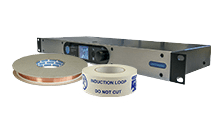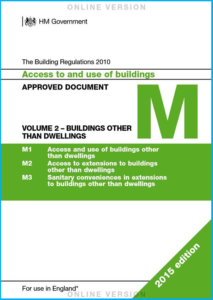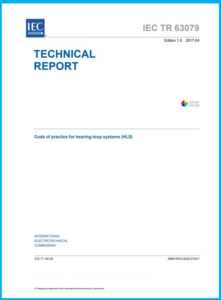earing loops are affected by a range of Standards and Legislation, such as disability equality laws, building regulations, codes of practice and performance standards. Legislation varies by country and performance standards can be complex, please contact our support team or your local distributor for help if you need specific advice. Call +44 (0) 1636 610062 or email support@ampetronic.com
Disability Access Legislation
The United Nations developed the ‘UN Convention on the Rights of People with Disabilities’ which is an international agreement protecting and promoting human rights of disabled people throughout the world. This agreement recognises that everyone is of equal value, has the right to make their own decisions, and should be treated with fairness, dignity, and respect.
The UN convention has resulted in many countries developing their own legislation, specifying how the rights of people with disabilities will be protected. In the UK we have the Equality Act 2010, in the US there is the Americans with Disabilities Act (ADA) and similar equivalent legislation is found around the world. Each act has its own requirements, some mandating the use of assistive listening, some actually mandating the use of induction loop systems. You can download a guide to the relevant legislation in your country here: [UP30108 Legislation_AppNote_interactive].
There are often also regional building codes or regulations which list requirements that must be met when constructing or making alterations to a building. These include disability access and can vary by country and state.
Below are examples of legislation for the United Kingdom.
UK Equality Act
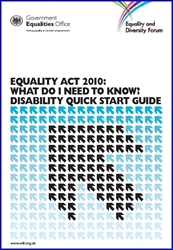
The Equality Act 2010 replaces the existing anti-discrimination laws, including the Disability Discrimination Act or DDA, with a single Act which simplifies and strengthens the law to tackle discrimination and inequality affecting people with ‘protected characteristics’ covering age, sex, race and disability. The guide to the section pertaining to disability access can be seen here and makes mention of hearing loops.
“Service providers are required to make changes, where needed, to improve service for disabled customers or potential customers. There is a legal requirement to make reasonable changes to the way things are done (such as changing a policy), to the built environment (such as making changes to the structure to improve access) and to provide auxiliary aids and services (such as providing information in an accessible format, an induction loop for customers with hearing aids, special computer software or additional staff support when using a service).”
The Building Regulations Part M
Access to and use of buildings, volume 2: buildings other than dwellings
The UK building regulations inform architects and builders about the requirements for new buildings and alterations to existing buildings, and include disability access. The regulations mention induction loops in reference to reception desks, performance and discussion areas and prominent use of signage to inform the hard of hearing of their presence.
“Any reception point is provided with a hearing enhancement system, e.g. an induction loop.”
“In order to obtain the full benefit of attending public performances or taking part in discussions, a person with impaired hearing needs to receive a signal that is amplified in both volume and signal to noise ratio. The three systems commonly used to provide this enhanced level of sound are induction loops, infrared and radio.”
“Provision for a hearing enhancement system is installed in rooms and spaces designed for meetings, lectures, classes, performances, spectator sport of films, and at service or reception counters when they are situated in noisy areas or they are behind glazed screens.
The presence of an induction loop or infrared hearing enhancement system is indicated by the standard symbol.”
British Standards 8300
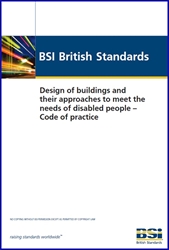
Design of buildings and their approaches to meet the needs of disabled people. Code of practice
British Standards document number BS 8300 is a code of practice regarding the design of buildings and their approaches to meet the needs of disabled people. Again, induction loops are cited with regard to meeting rooms/lecture rooms and performance areas but also lifts and help points. BS 8300 also requires any induction loop to meet the relevant performance standards.
“Ticket sales and information points that are located in noisy environments or that have security screens should have at least one position fitted with a hearing enhancement (induction loop).”
“A hearing enhancement system, using induction loop, infrared or radio transmission, should be installed in rooms and spaces used for meetings, lectures, classes, performances, spectator sport or films, and at service or reception counters where the background noise level is high or where glazed screens are used.”
“Induction loop systems should conform to BS 7594 and BS EN 60118-4.”
In general, legislation tends to demand solutions where it can be shown to be reasonable that equal access can be provided. Induction loops are often the most practical, cheapest and lowest maintenance solution for giving good quality access to the hearing impaired, and is therefore becoming the mostly widely adopted solution around the world.
Hearing / Induction Loop Performance Standards - IEC 60118-4
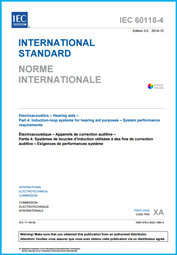
Electroacoustics - Hearing aids - Part 4: Induction-loop systems for hearing aid purposes - System performance requirements
The International Electrotechnical Commission (IEC) produced a standard for the performance of induction loop systems in any assistive listening application. This standard is being adopted across the world as the reference for loop system performance, such as BS EN 60118-4 in the UK and AS 60118.4 in Australia. The standard can be accessed from your regional standards association or from here .
While these performance standards aren’t legal requirements, they are often contractually binding if referenced in building specifications and provide the best evidence that a genuine benefit has been provided in line with the equality laws detailed above.
“This international standard is applicable to audio-frequency induction loop systems producing an alternating magnetic field at audio frequencies and intended to provide an input signal for hearing aids operating with an induction pick up coil.
The standard specifies requirements for the field strength in audio frequency induction loops for hearing aid purposes, which will give adequate signal to noise ratio without overloading the hearing aid. The standard also specifies the minimum frequency response requirements for acceptable intelligibility…
Methods for measuring the magnetic field strength are specified and information is given on appropriate measuring equipment… information that should be provided to operators and users of the system”
IEC TR 63079
Code of practice for hearing loop systems (HLS)
Also referenced in the UK as BS 7594, this code of practice gives advice on all aspects of the loop provision, from the microphone inputs, the loop itself to the signage and routine testing of the installation.
“The performance of induction loop systems is specified in IEC 60118-4, whereas this document gives recommendations and guidance for their design, planning, installation, testing, operation and maintenance.”
“Except for home systems sold as a complete kit, the engagement of a skilled system designer is advisable and is considered to be essential whenever large or complex installations are involved.”
Ampetronic believe that all installations should meet the requirements of IEC 60118-4. For this to be possible the standard must be considered during specification, design, installation and maintenance of the system. Please consult our note on IEC 60118-4 for advice on how the standard affects you.


